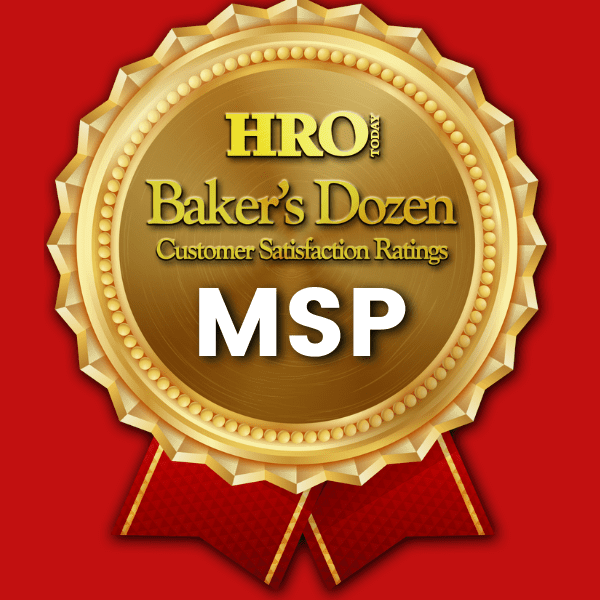Three factors are changing managed service programs for the better.
By Arkadev “Arko” Basak
The managed service program (MSP) market is undergoing more rapid evolution today than it has at any time in its history. The winds of change are blowing in from different directions, fundamentally altering the nature and purpose of the MSP industry. All stakeholders in this market, whether it be organizations, MSP providers or staffing vendors, are contributing to the change and will need to embrace it as well.
The biggest factors impacing the MSP market include:
• Nature of talent. It is a well-known fact that people’s preferences with respect to work are changing, and the contingent labor market dynamics are directly influenced by that. The proportion of contingent labor across the world is increasing as more candidates are opting out of permanent positions and as employers are seeking a more nimble workforce. The size and skill level of the contingent labor pool is changing and becoming a more important part of any organizational strategy. Both enterprises and service providers need to change how they consume and deliver services to embrace this shift.
• Enterprises’ experiences. The procurement division has always been the primary or at the least a key stakeholder for any organization’s contingent labor management. While procurement professionals are quite familiar with the MSP market, procurement outsourcing (PO) is a relatively new experience for them -and it’s influencing their outlook. The PO industry took off in earnest from 2006 onwards, and as it has grown consistently at more than 10 percent yearover- year for the last decade, it has gradually become a known commodity. The likes of IBM, Accenture, and Infosys have allowed oraganizations to leverage strategic sourcing, gain efficiency through process reengineering, and experience lower cost of services through intelligent use of offshoring. Organizations that have experienced PO now want to see some of its best practices applied to the MSP area as well. In fact, with many PO contracts involving the management of contingent labor, the PO industry is having a direct impact on MSP. With many buyers entering more mature, second- or third-generation MSP arrangements, the low hanging fruit is now gone, and they now are looking beyond to get the next level of benefits. This is leading to more complex and strategic solutions.
• Service provider differentiation. Management of contingent labor and staffing vendors have always been at the core of MSP and will continue to be so. The three Cs -cost reduction, compliance, and control (spend visibility) -are key reasons why enterprises enter an MSP agreement. So how does an MSP provider differentiate itself from others? By delivering new, innovative offerings, and providers are bringing their capabilities from their affiliate business units to the fore. Recruitment process outsourcing (RPO) is one such influencing affiliation. A number of MSP providers, including some of the largest ones, have RPO capabilities, and are bringing the best practices surrounding RPO such as direct sourcing and employer branding in the MSP space as well.
The MSP industry, which traditionally had the staffing industry as its primary influencer, is now seeing allied industries including PO and RPO emerging as new-age influencers. In fact, with all types of talent becoming increasingly critical to the success of any enterprise, buyers are looking at their MSP provider as an “outsourcing partner,” which will help in achieving strategic objectives -a natural first step toward the MSP industry getting more aligned to the business process outsourcing (BPO) construct and mindset.
Shifting Drivers and Solution Dynamics
The manifesting evolution is changing the drivers for adopting MSP, as well as solutions needed to achieve those objectives.
• Cost reduction and greater spend visibility. Buyers are looking beyond the traditional benefits obtained through operational efficiencies and temporary labor spend optimization. The ambition of MSP now extends to statement of work (SoW)/independent contractor (IC) spend, which are much larger in size than temporary labor spend. This more complete spend visibility encompassing the entire contingent budget is likely to have a far greater impact on enterprises’ bottom lines. This holistic view of spend also leads to better demand management and workforce planning through interchangeability of various types of contingent labor, leading to further cost saving. A mature enterprise willing to look at contingent and permanent labor in totality is likely to achieve even better cost savings and a workforce planning approach more aligned to business objectives.
• Compliance. While strict adherence and compliance to external regulations remains a critical driver for MSP, the more advanced solutions are increasing focus on plugging “gaps and leaks” through better compliance with internal guidelines and policies tht are minimizing rogue spend and better managing tail-end spend.
• Talent focus. As buyers’ outlook toward contingent talent is changing, MSP solutions are evolving accordingly. The traditional focus on service quality now goes hand-in-hand with talent quality. Access to scarce yet critical talent is another increasingly important focus of an MSP solution. While the quality and availability of high-skilled talent is now an important focal point across a significant portion of contingent labor spend, it is especially applicable to Ics/freelancers. Compliant classification of Ics and their sourcing resources are gaining in importance as many MSPs are augmenting their capabilities in this area through various strategies. For example, partnering with online freelancer talent communities is becoming more common. Other new approaches to improve access to talent include augmenting MSP solutions with employer branding and employee value proposition (EVP) add-ons. Direct sourcing, talent pipelining, and access to alternate talent (such as alumni, referrals, internal movement) are other levers that are being used to improve talent accessibility.
• Delivery model. A review of centralized delivery centers and offshoring in related industries such as RPO and PO is proof of the vast untapped potential to reduce costs in MSP. While offshoring needs to be intelligently executed through a balanced-shoring approach, there is definitely a huge opportunity to optimize the current MSP delivery models (which are often still on-site focused) especially for the procure-to-pay (P2P) processes.
• Pricing model. There are increasing instances of gainsharing pricing models in MSPs in terms of a portion of spend reduced being shared with the service provider. While it is a very good way to appropriately incentivize the MSP, it needs to be carefully structured to avoid bitter debates on causality of the spend reduction. A a strong level of trust between service provider and buyer goes a long way.
The transformation of the MSP industry is likely to accelerate as each and every spoke in the wheel will grow and influence the entire landscape – whether it is organizations, service providers, or the talent. If any of these stakeholders fail to evolve with the advancing times, bears the risk of being left behind.













